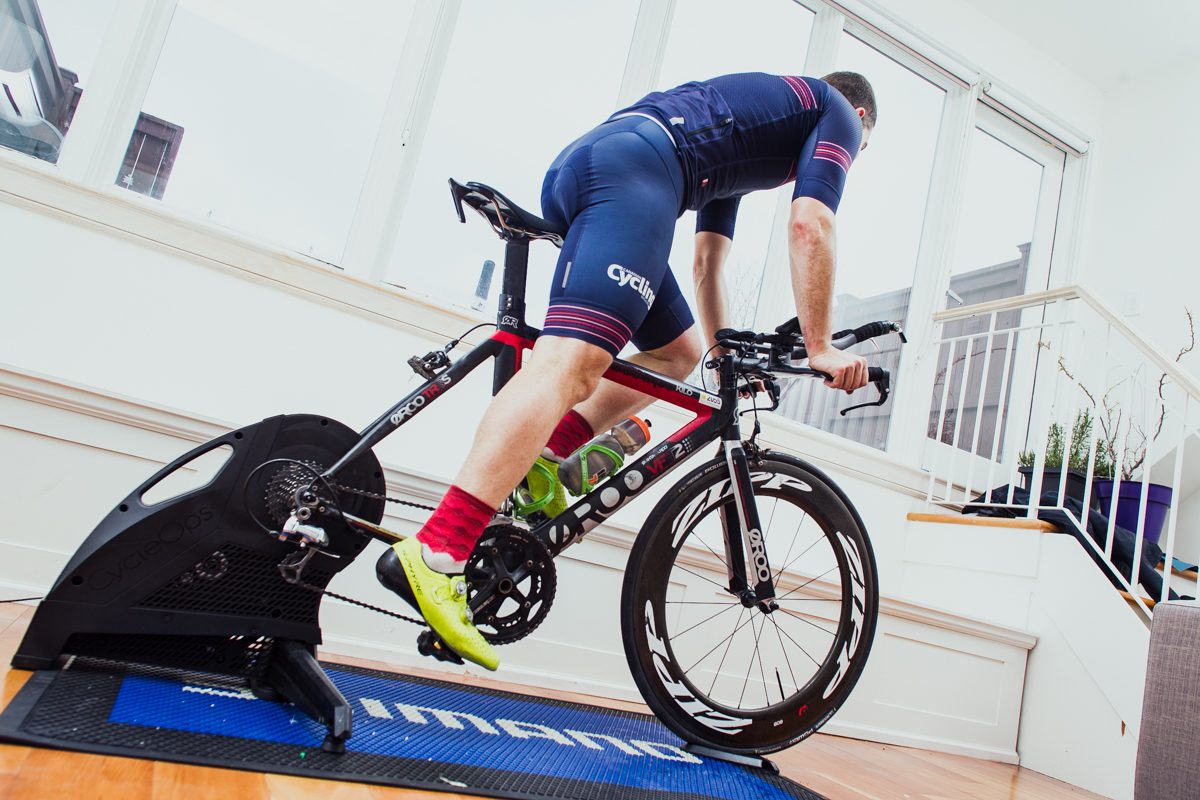5 Keys to building your own indoor bike workout
A guide to creating your own indoor bike workout during the off season.

by Melanie McQuaid
Offseason bike workouts are designed to both rest your body after a long season of racing, while still keeping in touch with some fitness before starting next season’s build. Smart offseason training should briefly touch on technique, power and intensity, while still allowing for overall recovery. The following guidelines will help you design offseason cycling workouts to match those goals.
- Keep it short
Offseason trainer workouts are effective when they are 75 minutes or less. In the offseason, good choices for longer training sessions would be cross training, – cross country skiing, snowshoeing and mountain biking, for example. Choosing alternate sports allows your body to avoid the repetitive motion of your regular triathlon training. If you want a session on your time trial or road bike, it is better to keep it short.
In addition to total workout duration, keep the volume of quality training short. Offseason sessions should include half the quality time you do in a session during the season. This means a session designed as 30 minutes of threshold work should be shortened to 15 minutes in the offseason. For example, instead of 6 x 5 minutes of threshold effort, do 2 to 3 x 5 minutes.
- Rest more
The rest period for high intensity sets should be lengthened. For example, an in-season workout of 6 x 5 minutes at threshold intensity might be designed with two minutes rest between each repetition. For the offseason, you can adjust this session to 2 to 3 x 5 minutes, with four or five minutes rest.
Maximum power intervals also have benefit in the offseason. For these workouts, full recovery is required, so adjusting the number of efforts will make these workouts appropriate during the offseason. 4 to 5 x 15 seconds of maximum effort is enough in the offseason to maintain neurological recruitment. Recover completely before you perform another interval.
- Add a technical component
Focus some offseason cycling training on technical reinforcement. You can do this through:
- Single-leg pedaling drills
- Cadence drills
- Overgear work
- Sitting/standing efforts
- Riding the rollers
Any of these can improve your pedalling technique. Choose to add one, or all, of these drills during your workout. A good place to put technical drills is during the warmup and cooldown to remind yourself of the technique before and after you do any work.
- Polarize your training
Your training at this time should either be hard or easy. (Polar opposites.) Riding tempo, or medium, efforts accumulates fatigue in the body and the nervous system, which you are trying to avoid during an offseason break. Design your indoor sessions to either be an easy, recovery session with some technical components or, if you want to do some intensity, a short, hard session with a lot of rest between efforts.
- Warm up and cool down
All sessions should include a warm up and cool down, even when they are short. Set aside at least 10 minutes of building effort to warm up before you start any hard work. Similarly, have 10 minutes at the end where you do some easy pedalling to help flush your legs from any efforts you have done.
Try this 60-minute workout:
15:00 build from easy to moderate pace
4:00 as 2 x (30 seconds left leg, 30 seconds both legs, 30 seconds right leg, 30 seconds both legs)
1:00 maximum cadence but low watts (easy gears)
10:00 as 5 x 15 seconds stomp to accelerate a big gear as hard as possible/ 1:45 easy
20:00 as 2 x 5 minutes hard threshold effort (90 to 100 rpm) with 5 minutes easy spin at 100 rpm rest
10:00 easy warm down
You don’t have to ride with any intensity during your offseason break if you don’t feel like it, you can just rest and get back to training when you are ready. After all, the point of an offseason break is to rest. However, a little bit of intensity will keep you fit, work on your technique and keep it interesting. Do what feels good – just don’t do too much.
Melanie McQuaid is a three-time Xterra world champion, two-time ITU cross world champion and a six-time half-distance champion. She coaches and trains in Victoria.
